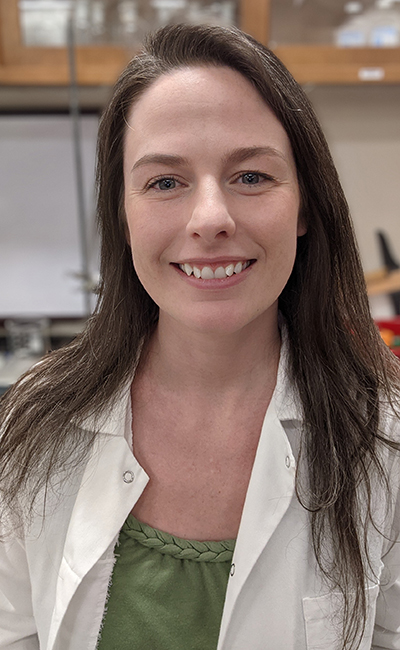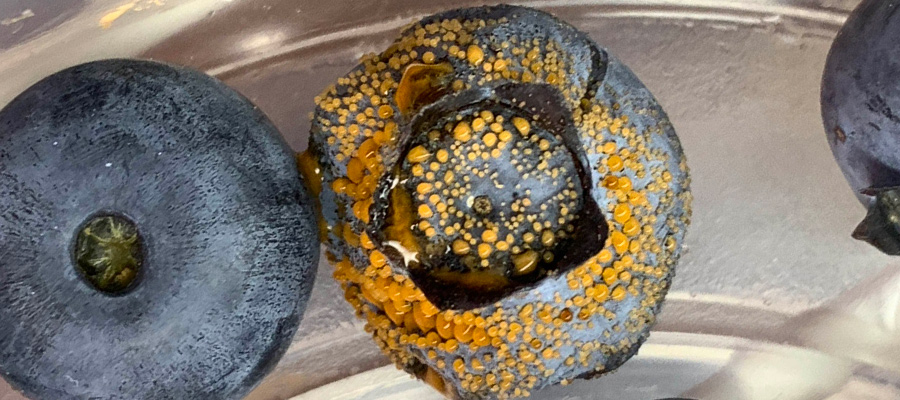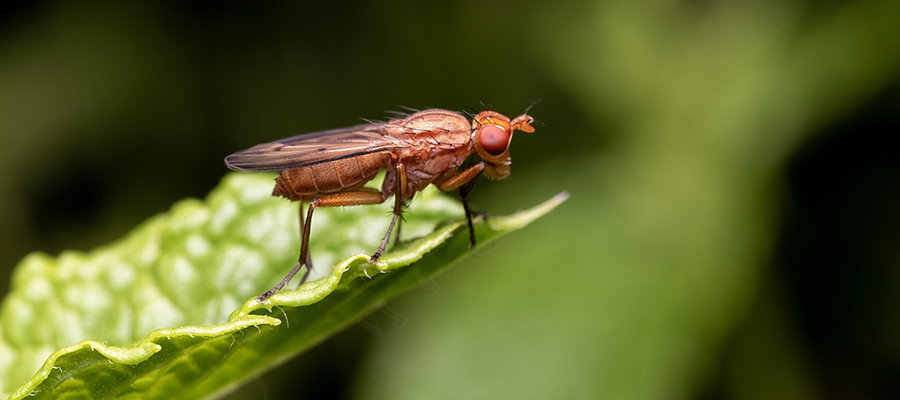BY LUCY WRIGHT | 18 OCTOBER 2023
A counterfeit aroma could reduce the need for insecticide use.
Blueberries growing fungus are typically destined for the compost bin, but for a team of researchers in the US, they could provide the key to tackling the unsustainable use of insecticides.
In a new study, published in the SCI journal Pest Management Science, researchers explored how blueberries infected with the fungus Colletotrichum fioriniae emit odours that repel spotted-wing drosophila (SWD) – a fruit fly that is a destructive pest of berries and cherries. By recreating the aroma of the fungus, they were able to trick the flies into perceiving healthy fruit as infected.
SWD is a notorious pest that poses a significant threat to thin-skinned fruits, causing substantial economic losses to growers worldwide.
The result is a potential pest control method that could manipulate insect behaviour and reduce insecticide use, with no fungal infection required.

Left: Caitlin Rering
‘SWD are very difficult to control because most of their life cycle occurs inside of fruit, where they are protected from chemical sprays, leaving only the flying adult insects as potential targets for insecticides,’ explained Caitlin Rering from the US Department of Agriculture, one of the lead authors of the study.
‘The flies are also capable of exponential growth once infestation begins. A single female SWD can produce over 350 eggs in her lifetime, and each egg can develop into an adult in as little as 10 days.’
This prolific growth means that farmers currently rely on pesticide use for crop protection, contributing in some cases to insecticide resistance and negative environmental impacts.
The fungus itself is also a threat to crops. C. fioriniae can cause rot disease and, as Rering notes: ‘It is certainly not an organism that farmers would want to introduce to their field’. However, by analysing the difference in odours emitted by healthy and rotting fruit, the researchers were able to identify specific volatile chemicals produced by the fungus which repel SWD.
‘Of all the chemicals we tested, two seem particularly potent in repelling flies: ethyl crotonate and ethyl butyrate. These are small, simple chemicals with highly similar chemical structures. In our laboratory tests, both volatiles repelled SWD from foraging and laying eggs on treated fruit.’
Rering noted that the control method exploits SWD’s high sensitivity to the aroma from infected fruits. ‘To a human, the fruit in the early stages of infection that we studied look and smell completely normal. However, the flies can easily distinguish between infected and uninfected fruit, even when we can’t.’

Blueberries infected with the fungal pathogen Colletotrichum fioriniae.
Credit: USDA Agricultural Research Service.
These repellents could offer effective alternatives to traditional chemical control methods. In particular, Rering explained how the volatiles identified could be incorporated into a pest control strategy known as ‘push-pull’ management. The natural repellent would ‘push’ the insects away from the crop, whilst an attractant would lure them towards a trap containing insecticide, killing the flies without the need to spray the crops themselves.
‘Our next steps are to begin testing the repellents in the field alone and in combination with attractants in a push-pull scenario. We started testing in the field this summer and have some very promising results so far. We also want to test if these repellents will work in other fruits infested by SWD, like strawberries, cherries and raspberries.’
If the repellents are proven to be effective in field trials, they could help growers to reduce their reliance on insecticides. This in turn could reduce the risk of insecticide resistance, protect pollinators, and minimise the contamination of food and water supplies with pesticide residues.
Dave Hughes, Global Head of technology identification and evaluation for crop protection at Syngenta, commended the authors for making ‘an ecological observation [that could lead] to a potential practical application’, but noted that there is a lot of work left to turn this into a technology used by farmers.
‘Formulation is a key challenge – volatile chemicals disappear very quickly and hence some slow-release technology is likely necessary.
‘The authors are analysing the repellent effects one component at a time, but it is quite possible that mixtures of these volatiles are more effective than any one component, and working out the optimal mixture will take work; as will getting the regulatory permissions to use the technology in commercial agriculture – and it all needs to be cheap enough to make commercial sense.’





